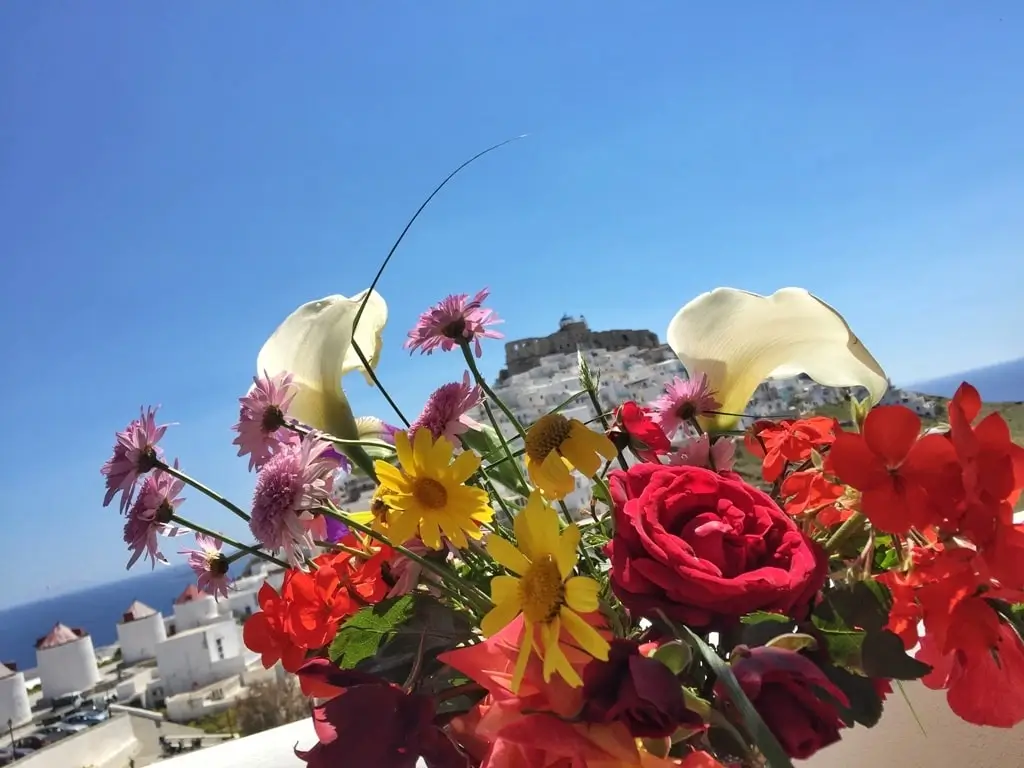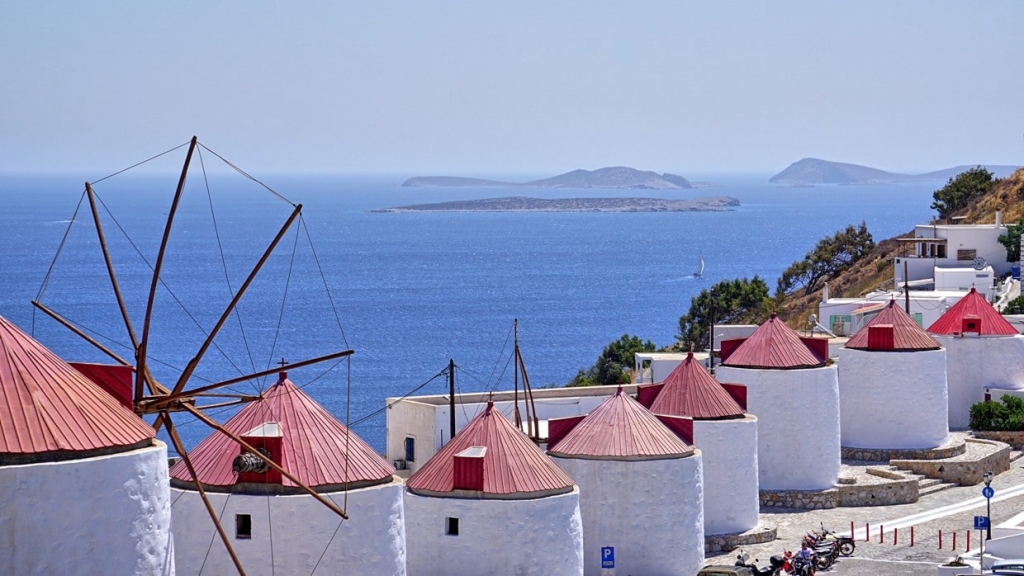
Meeting at the Mills!
"Looking towards the distance, we see a mountain in the shape of a wide cone with strange buildings and an oblong Castle at the top, a few white houses that seem to be rolling downwards, and a line-up of windmills to their side on a lower mound." Athena Tarsouli, Astypalea, 2001
A trademark of Astypalea, the traditional windmills stand out at the foot of Chora, as elegant and nostalgic references to the islands’ culture.
The first Greek windmill was designed in the 1st century AD by Heron Alexandreas, an engineer and geometer. The mill was of a horizontal rotational axis and had 4 wings. In essence, however, windmills appeared in Greece during the 12th to 13th centuries and their use was established during the Byzantine period, experiencing even greater prosperity in the Eastern Aegean during the Frankish period.
A precursor of the industrial age, windmills took full advantage of the generous winds of the Aegean and provided the islanders the greatly coveted flour. Two stone trays moved in opposite direction and milled the wheat into flour, a necessary ingredient for bread. From each mill, the miller kept 10% as fee, the so-called axai or xai, while the mill itself was operational for the whole twenty-four hours of the day, without set schedule or holidays.
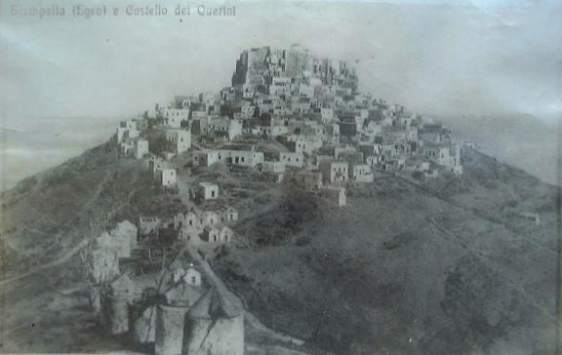
Strong north winds are necessary for the location where a mill is built, since north winds are more reliable than the south winds, which are constantly changing intensity and direction. It is worth noting that construction was prohibited within a certain radius from a mill, to ensure its continued smooth operation. The unobstructed air flow from all sides is explicitly mentioned in the purchase and sale of windmills. Thus, the windmills were built near a settlement, in a place accessible from undergrowth, but in a certain distance from other buildings.
In the period 1830-1870, Astypalea played an important part due to the privileges it had granted by the Turks. When the pirate threats ceased, the reconstruction of the area around the Castle flourished and the first windmills began to emerge. Initially, the windmills served for the nutritional needs of the inhabitants of the Castle of Querini and gradually the inhabitants of the whole island that had wheat fields.
In Astypalea, the mills are located at the foot of Chora and, of course, in the windiest area, where strong currents are geomorphologically favoured.
There were twelve windmills in Chora, in total. Eight of them survive today, one of which is affixed to a newer structure and another is in ruins. Based on photographs survived from the early 1900s, it is likely that the last three windmills are the oldest mills of the line-up, because they already look dilapidated even back then, and missing their wind turbines.
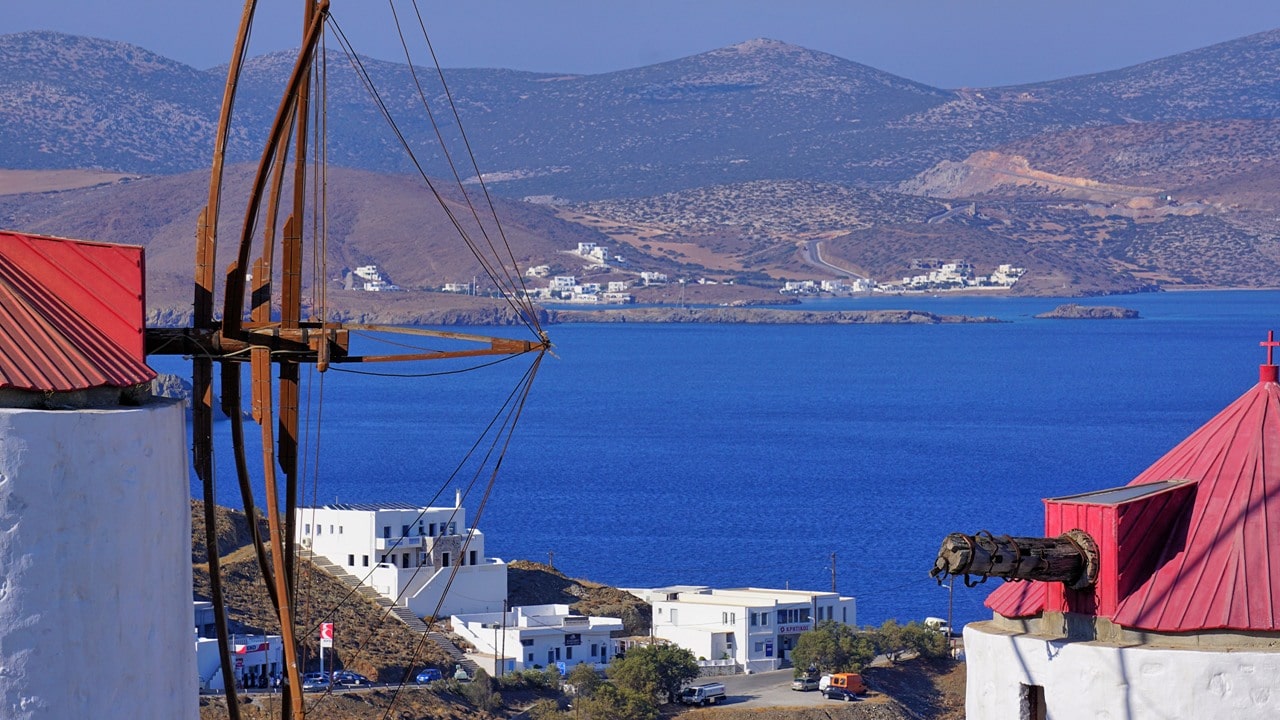
The eight windmills retain their dome, with only 5 keeping their sails, with twelve sails on the wind turbine. The ninth windmill appears half-destroyed even since the first decade of the 20th century. There is a larger gap between the sixth and seventh mill. A very low auxiliary hut was also present in the past, but no longer exists and a modern asphalt paving has been constructed in its place.
In addition, Palaiomylos (Oldmill) mill has been restored in recent years, located in the NE area of Chora, on the road leading to Agios Ioannis Castle, about 1.5 km from Chora on a rampart, to the left of the first turn of the road.
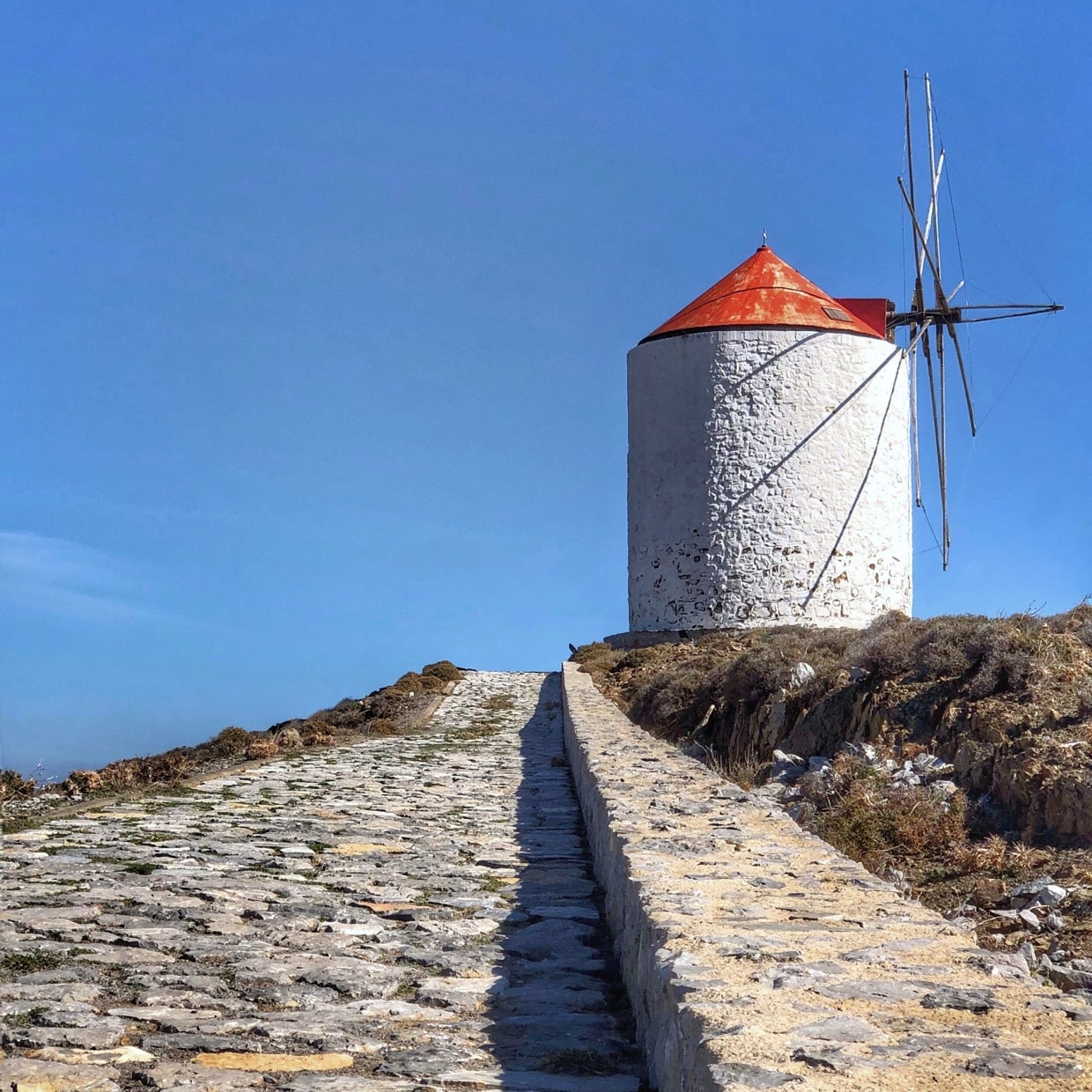
Most windmills have been recently repaired or preserved and are still in use today as museums and exhibition spaces. One mill houses the Municipality’s Tourism Office and the other the foreign language lending library.
According to data from the Hellenic Mills Institute (ITEM), windmills in the Aegean Sea, the coast and some mountain peaks of mainland Greece are estimated at coming around 2,000 in number.
Bibliography
- Windmills: the stone giants of the Aegean, Visit Greece.
- Windmills III, Ioannis N. Koumanoudis, Ed. TEE
- Project: "WITH THE BREATH OF THE WIND...", 2nd General High School of Lamia, 2011-12
- Astypalea, Athena Tarsouli (2001), Ed. Agra

